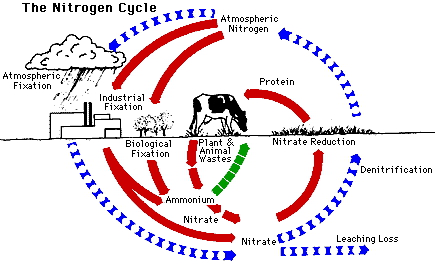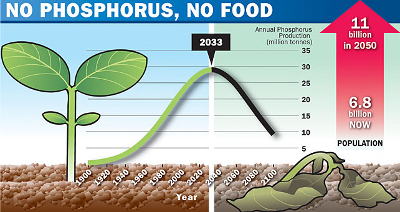
Nutrient mobility in the soil
 Jeff
Lowenfels' book
provided a handy way of dividing up plant nutrients --- by how
mobile they are in the soil. Understanding nutrients'
mobility helps explain why certain soil nutrients can be present
in the soil but unavailable for your plants, and why others might
not stay put when you add them to your garden.
Jeff
Lowenfels' book
provided a handy way of dividing up plant nutrients --- by how
mobile they are in the soil. Understanding nutrients'
mobility helps explain why certain soil nutrients can be present
in the soil but unavailable for your plants, and why others might
not stay put when you add them to your garden.
At one extreme lie
the nutrients that are very mobile in the soil and tend to float
into plants along with water. As long as there's enough
nitrogen in the form of nitrate, sodium, boron, and chlorine to go
around, you won't see deficiencies in your plants. On the
other hand, these mobile nutrients tend
to wash away in heavy rains, so those of you who live in
rainy climates like I do will want to make sure you provide mobile
nutrients only when plants are actively taking them up.
At the other end of
the spectrum, phosphorus, copper iron, manganese, and zinc (and,
in tropical soils, sulfate, nitrate, and chlorine) react
chemically to soil particles. Plants have a very tough time
taking in these nutrients without the help of mycorrhizal fungi,
so you can often see a deficiency in your plants even if (for
example) there's plenty of phosphorus in  the soil. This is
one reason why farmers worry about the world running out of
phosphate fertilizers --- they're pouring phosphorus into the soil
far faster than plants can use it rather than keeping the soil
healthy so fungi can bring plants the phosphorus that's already
there.
the soil. This is
one reason why farmers worry about the world running out of
phosphate fertilizers --- they're pouring phosphorus into the soil
far faster than plants can use it rather than keeping the soil
healthy so fungi can bring plants the phosphorus that's already
there.
In between these two
extremes lie most of the positively-charged nutrients, which are
attracted to soil particles a bit like a magnet to iron.
Roots have to trade a positively-charged hydrogen ion for each cation they take in (a process
known as cation exchange). These semi-immobile nutrients
include nitrogen in the form of ammonium, potassium, calcium,
magnesium, molybdenum, and nickel. If your soil is low on
these cations, it's probably because you haven't built up your
organic matter enough to hold them in place so your plants can
trade for them.
Stay tuned for
tomorrow's post to learn more about how plant nutrients make their
way into roots.
| This
post is part of our Teaming
with Nutrients lunchtime series.
Read all of the entries: |
Want more in-depth information? Browse through our books.
Or explore more posts by date or by subject.
About us: Anna Hess and Mark Hamilton spent over a decade living self-sufficiently in the mountains of Virginia before moving north to start over from scratch in the foothills of Ohio. They've experimented with permaculture, no-till gardening, trailersteading, home-based microbusinesses and much more, writing about their adventures in both blogs and books.
Want to be notified when new comments are posted on this page? Click on the RSS button after you add a comment to subscribe to the comment feed, or simply check the box beside "email replies to me" while writing your comment.

I noticed that you are reading Jeff's books on soil health. He's a big no-till advocate and local garden expert up here in Anchorage. He's an attorney by trade, but he writes a regular garden column for the Anchorage Daily News for years and he lets us know when its time to do anything garden since timing is everything with our short growing season.
I know his books can seem pretty dense, but they always seem to produce some really profound insights that make wading through the details worth the effort. Glad some local talent is getting some Appalachian coverage!